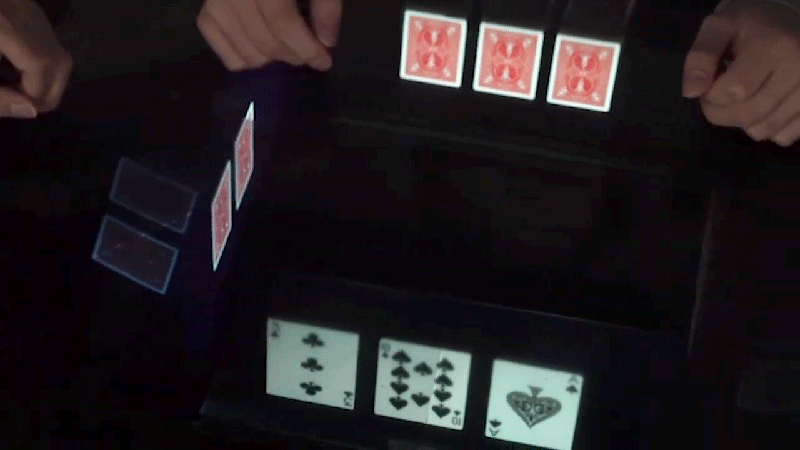Of all the attempts we’ve seen to digitize card games and eliminate game night controversies over poorly shuffled decks and questionably dealt hands, the ReQTable is the most ambitious and easily the most awesome, with its ability to generate holograms of playing cards that appear to float in front of each player, all without revealing those cards to others. Add some virtual monsters, and you’ve got my editor’s childhood dream.
Most attempts to digitize board games and card games usually involve turning a giant touchscreen display into a table large enough for players to gather around. That’s the approach devices like Arcade1Up’s Infinity Game Table have taken, and while they ensure that no one can rage flip the digital game boards and playing pieces when they start losing, they make it hard to play games like Poker, where players need to keep their hands private. The Infinity Game Table’s solution is physical shields that you can place on the touchscreen to hide specific parts of it from others, but the ReQTable’s solution is to throw some very cool custom display technology at the problem.
Developed by researchers at the University of Tokyo and set to officially debut at the Siggraph 2022 conference taking place next week, the ReQTable improves upon existing holographic display technology called slit mirror arrays. These are able to generate images that appear to float in mid-air in front of the intended observer without the need for special glasses. With dual-sided mirror arrays, the technology can generate a pair of holograms, viewable from opposing sides, which in this instance allows one person sitting at the table to see the cards they’ve been dealt with, while the person sitting across from them only sees the generic card backs.

The problem with this approach is that the dual slit mirror arrays traditionally produce stray light and ghost images, which in the case of a virtual card game, gives players a glimpse of their competitors’ hands. The ReQTable solves this problem and eliminates the stray light and ghost images through the use of polarizers, which can selectively suppress light of a specific frequency, and view control films, which block light traveling in certain directions, as detailed in a recently published paper:
Dual-sided displays as light sources are placed under the dual SMAs. In this case, the light rays from the back of the dual-sided displays forms mid-air images for each of the users. The light rays from the display are linearly polarized by the first polarizer. Next, the rays that form the ghost images are reflected an odd number of times in the dual SMAs. Therefore, the direction of their polarization changes, and they cannot pass through the second polarizer. In contrast, transmitted light rays and light rays forming mid-air images are reflected an even number of times in the dual SMAs. Their direction of polarization is different from that of the rays that become ghost images. Therefore, they can pass through the second polarizer.
Playing a round of virtual poker is a fun demonstration of why this improved holographic display technology could be potentially useful, but there are countless other applications. One day, computer monitors might be replaced with holographic displays generated by a desk, and the technology developed for the ReQTable could allow multiple people to share the same desk while keeping their individual holographic screens private from each other. The technology also encourages additional human interactivity, because despite a holographic object appearing to float in front of everyone at the table, they can still easily see each other and physically interact without the worry of knocking anything over.
Not to mention, we could use it to play a very advanced version of a children’s card game.
